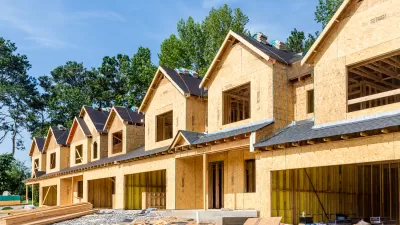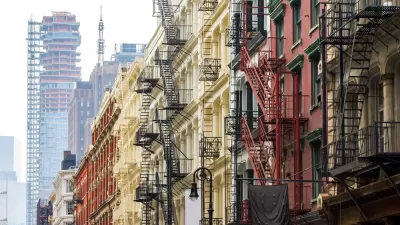First, a new report from NYU's Furman Center details the evolving characteristics of subsidized rental housing in New York City. Second, the results from Mayor Bill de Blasio's affordable housing efforts are in from his first year in office.
A post on the NYU Furman Center's website shares news of a new study: "Housing, Neighborhoods, and Opportunity: The Location of New York City’s Subsidized Affordable Housing (PDF), a report released today by the NYU Furman Center’s Moelis Institute for Affordable Housing Policy, examines changes in the location and neighborhood characteristics of subsidized rental housing in New York City."
"The study shows that the distribution of subsidized rental units across New York City’s neighborhoods changed significantly between 2002 and 2011, not just as a result of new development, but also because of differential opt-out rates across neighborhoods."
The post also notes that over the next decade, "over 58,000 units of subsidized rental housing will be eligible to opt out of affordability restrictions" in the city.
That figure segues nicely into a discussion of Mayor Bill de Blasio's goal to protect or develop 200,000 units of affordable housing over the next ten years, which will encounter challenges like those detailed in the aforementioned report. Andrew J. Hawkins reports that Mayor de Blasio held a press conference this week to announce that "[the] city preserved 11,185 affordable apartments and financed the creation of 6,191 new ones in 2014…"
"The total number for 2014 exceeded the city's projections by about 1,300 and represents 8.6% of the mayor's ultimate goal of 200,000 units over 10 years. The mayor said the city is moving to ramp up preservation and production efforts to around 20,000 units per year."
Hawkins also includes more details about the types of units preserved and created and where they are located.
FULL STORY: Report: High-Opportunity Neighborhoods in NYC are Losing Affordable Housing

Pennsylvania Mall Conversion Bill Passes House
If passed, the bill would promote the adaptive reuse of defunct commercial buildings.

Planning for Accessibility: Proximity is More Important than Mobility
Accessibility-based planning minimizes the distance that people must travel to reach desired services and activities. Measured this way, increased density can provide more total benefits than increased speeds.

Fair Housing Cannot Take a Back Seat to ‘Build, Baby, Build’
If we overlook fair housing principles in the plan to build US housing back better, we risk ending up right back where we started.

LA Metro Board Approves New 710 Freeway Plan
The newest plan for the 710 corridor claims it will not displace any residents.

Austin’s Proposed EV Charging Rules Regulate Station Locations, Size
City planners say the new rules would ensure an efficient distribution of charging infrastructure across the city and prevent an overconcentration in residential areas.

Making California State Parks More Climate-Resilient
A recently released report offers recommendations for keeping state parks healthy and robust, including acquiring additional land for conservation and recreation.
City of Costa Mesa
Licking County
Barrett Planning Group LLC
HUD's Office of Policy Development and Research
Mpact Transit + Community
HUD's Office of Policy Development and Research
Tufts University, Department of Urban and Environmental Policy & Planning
City of Universal City TX
ULI Northwest Arkansas
Urban Design for Planners 1: Software Tools
This six-course series explores essential urban design concepts using open source software and equips planners with the tools they need to participate fully in the urban design process.
Planning for Universal Design
Learn the tools for implementing Universal Design in planning regulations.


























